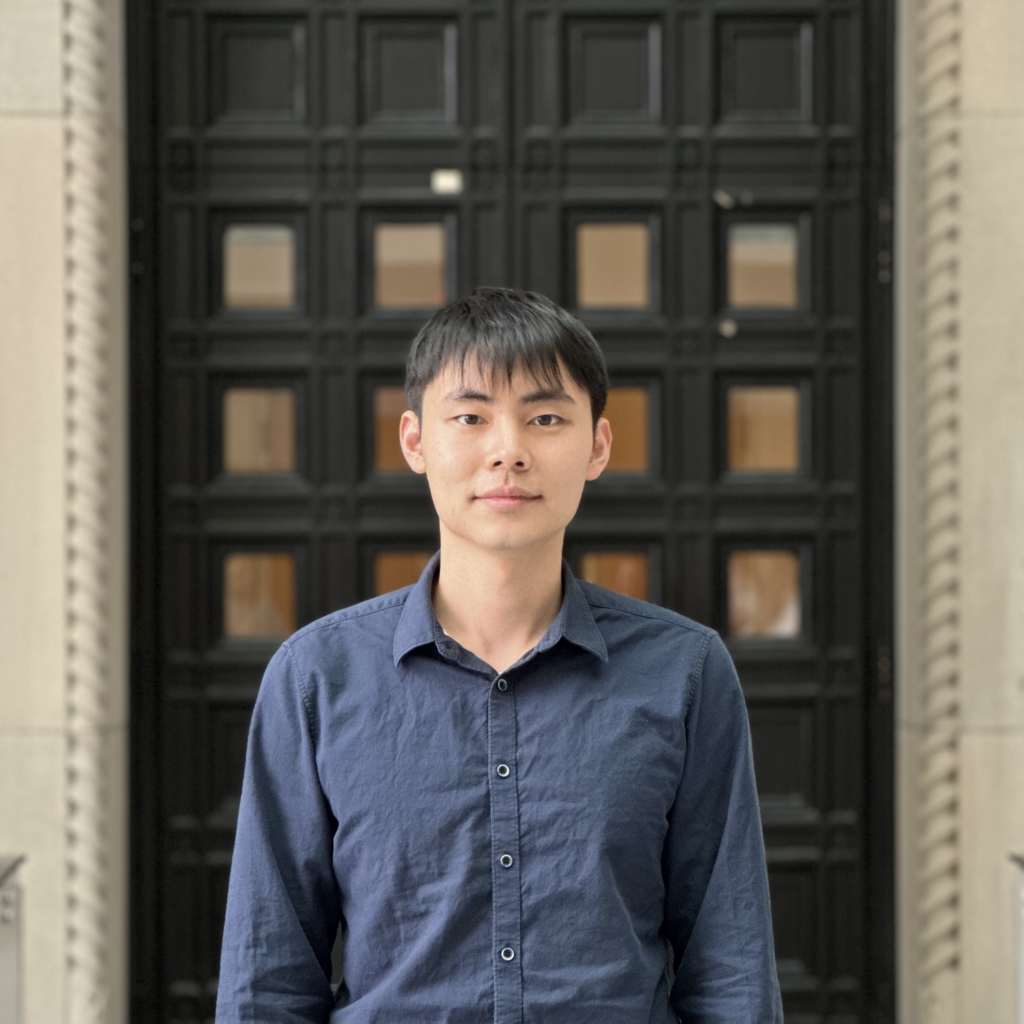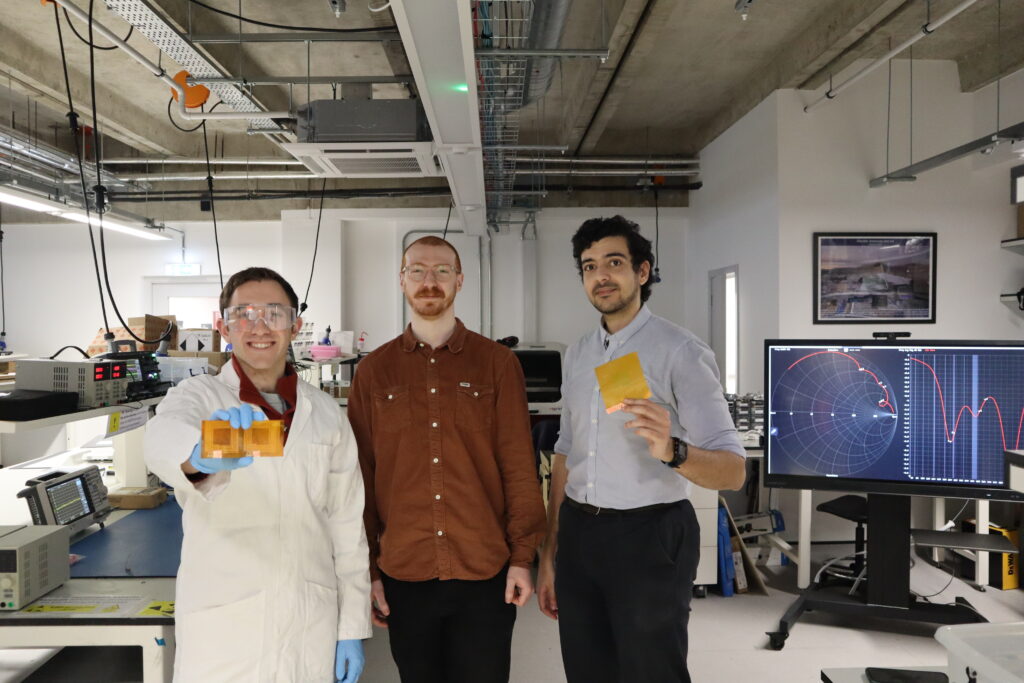Dr. Erin E. Stache, Assistant Professor of Chemistry at Princeton University, and her team at the Stache Lab have developed an innovative photothermal method for plastic recycling, utilising carbon black to efficiently depolymerise plastics. This approach offers a more energy-efficient and sustainable alternative to conventional chemical recycling processes, with the potential to significantly advance plastic waste management. The teams research can be found here:
Oh, S., Jiang, H., Kugelmass, L. H., & Stache, E. E. (2025). Recycling of Post-Consumer Waste Polystyrene Using Commercial Plastic Additives. ACS Central Science, 11(1), 57–65. https://doi.org/10.1021/acscentsci.4c01317
Follow the Main Authors here:
- Dr. Erin E. Stache | Linkedin
- Hanning Jiang | Linkedin
- Erik Medina | Linkedin
- Sewon Oh ResearchGate Profile

As part of our in-depth exploration of this breakthrough, which we previously highlighted in our news feature, we spoke with Dr. Stache and Hanning Jiang to gain deeper insights into their research and its potential impact on the future of plastic recycling.
The following interview is presented unedited to preserve Dr. Stache’s and Jiang’s original responses, providing a comprehensive and authentic understanding of their work and its implications for sustainable materials science.
Acknowledgement From Dr. Erin E. Stache: This research was supported in part by Cornell University and Princeton University. This research is supported in part by the Department of Energy, Office of Science, Office of Basic Energy Sciences, Catalysis Science Early Career Award (DE-SC0024412). This research made use of the NMR Facility at Cornell University, supported by National Science Foundation Award CHE-1531632 and the Cornell Center for Materials Research Facilities, supported by National Science Foundation Award DMR-1719875. The authors acknowledge the use of the Imaging and Analysis Center at Princeton University via Princeton Center for Complex Materials, supported by National Science Foundation Award DMR-2011750.
Could you explain the underlying mechanism by which carbon black promotes the depolymerisation of plastics, and how this differs from conventional chemical recycling processes?
Carbon black absorbs light (across the whole solar spectrum) and transforms photons into heat through non-radiative decay pathways. Photothermal heating is advantageous over conventional heating in that it provides highly localized kinetic energy, which is faster and more effective at heating up the reaction vessel and potentially increasing the product selectivity toward monomers.
What types of plastics are most effectively broken down using this method, and are there specific polymer structures that pose greater challenges?
Polystyrene (PS), the material used in “Styrofoam” or expanded polystyrene, resin identification code 6 (the number inside the recycling signs on plastics) was chemically recycled back to styrene monomer with our method. Ongoing research also showed effective depolymerization (also known as “chemical recycling”) for other common plastics. Halogenated polymers could be more hazardous and challenging due to release of corrosive gas. However, in a recent work:
Jiang, H., Medina, E. A., & Stache, E. E. (2025). Upcycling Poly(vinyl chloride) and Polystyrene Plastics Using Photothermal Conversion. Journal of the American Chemical Society, 147(3), 2822–2828. https://doi.org/10.1021/jacs.4c16145
we also broke down–(*note: not depolymerized)–poly(vinyl chloride) (PVC, RIC 3) into hydrogen chloride and a photothermal agent (DHPVC). Upon co-upcycling with polystyrene and further functionalization, we were able to achieve value-added compounds used in fragrance or pharmaceuticals.
How does the presence of carbon black facilitate a more energy-efficient degradation process, and what are the key reaction conditions required for optimal performance?
Although the energy required for depolymerizing the same amount of polystyrene should be identical, photothermal heating is advantageous over traditional strategies for its localized heating mechanism. This means the plastics readily gets heated prior to rising the temperature of the whole reaction container, which makes the process faster. More importantly, since solar energy can be used as the thermal energy input, the process can be “greener” and more cost-effective compared to traditional heating.
Currently, we noticed that 10 wt% of black polystyrene plastics in a plastic mixture can afford up to 70 % monomer recycling yield. Compared to the fact that ~15 wt% of plastics are black, this indicates potential for photothermal conversion being used in polystyrene plastic recycling.
We have observed styrene-dimer and -trimer as the main byproducts. These compounds can be easily separated from the styrene monomer (desired starting material for making new polystyrene) based on vacuum distillation due to large difference in their boiling points.
How scalable is this approach for industrial applications, and what are the biggest technical or economic barriers to its widespread adoption?
Currently, we have run up to 6-gram scale (about the weight of a takeout polystyrene foam container) in lab since the technical limitation lies in the size of light chips. We have several exciting ideas for scaling the process, but they are still under development.
Could this technique be integrated into existing plastic recycling infrastructure, or would new processing systems need to be developed to take full advantage of the method?
Fortunately, large scale solar photothermal setups such as concentrated solar power (CSP) is already used in industry. We are optimistic in seeing similar setups being coupled with distillation infrastructures suitable for plastic recycling.
Looking forward, what are the next steps in your research, and are there any collaborations with industry or policymakers to explore commercial implementation of this breakthrough technology?
We are interested in further studying the underlying reaction mechanisms and diving into the fundamentals of reaction parameters. By systematically investigating different additives and reaction parameters, we can further develop the small scale version of this chemistry. Then, with proper engineering and the support of environmental policies, photothermal conversion could be potentially used as a “green” and economical technology for plastic waste management.

Hassan graduated with a Master’s degree in Chemical Engineering from the University of Chester (UK). He currently works as a design engineering consultant for one of the largest engineering firms in the world along with being an associate member of the Institute of Chemical Engineers (IChemE).



